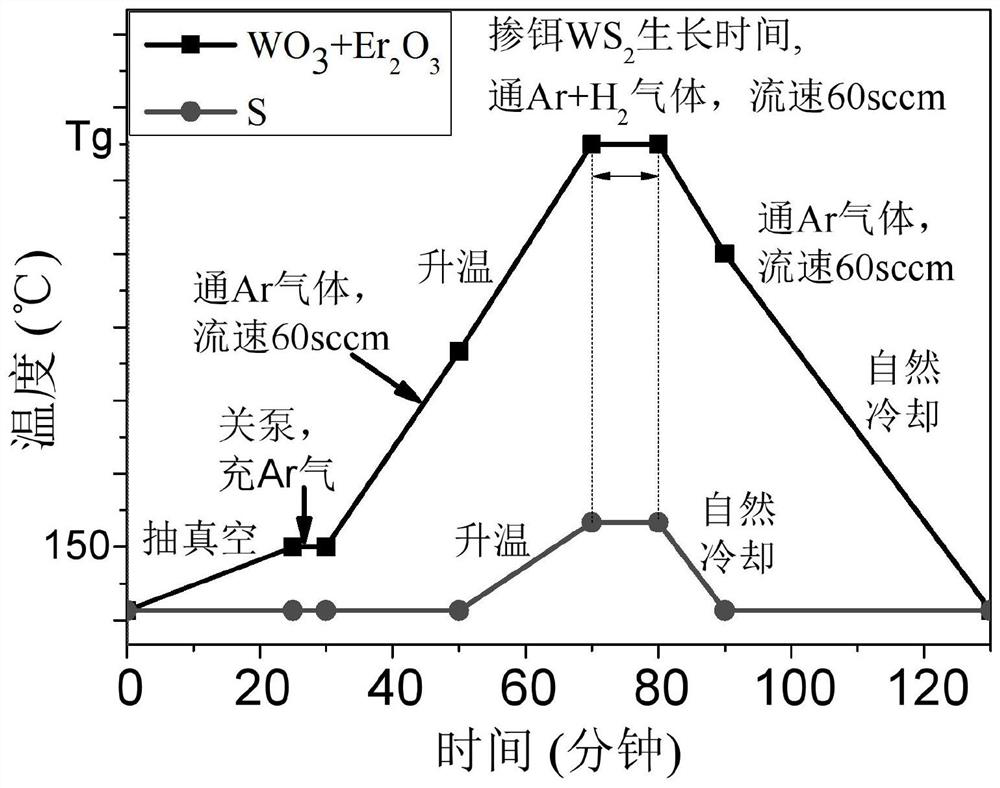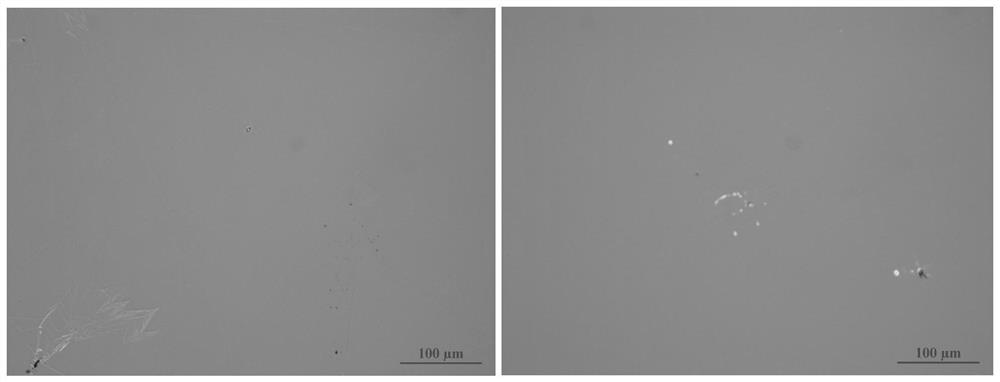A method of mixing rare earth materials in the growth of two -dimensional materials CVD
A technology of rare earth materials and two-dimensional materials, applied in the field of two-dimensional materials, can solve the problems of long photoelectric response time, low quantum efficiency and carrier mobility of two-dimensional materials, and limited applications, and achieves the improvement of photoelectric response performance. The effect of improving electrical and optoelectronic properties, photoresponse spectral width
- Summary
- Abstract
- Description
- Claims
- Application Information
AI Technical Summary
Problems solved by technology
Method used
Image
Examples
Embodiment 1
[0052] Embodiment 1 of the present invention provides a method for doping rare earth materials in the CVD growth of two-dimensional materials. The experiment of doped tungsten disulfide two-dimensional material is carried out in a dual-temperature zone vacuum tube furnace. The experimental device is as follows: figure 1 As shown, the grown erbium-doped tungsten disulfide WS 2 The schematic diagram of the temperature and airflow settings during the (Er) 2D material process is shown in Fig. figure 2 shown.
[0053] Specifically include the following steps:
[0054] (1) The substrate selected for the preparation of the sample is a single crystal silicon wafer with surface polishing or a single crystal silicon wafer with surface polishing and oxidation; before preparing the sample, the substrate needs to be cleaned to remove surface impurities; the substrate is immersed in acetone, alcohol, Ultrasonic cleaning was performed in deionized water for 10 min respectively; then the c...
Embodiment 2
[0064] The technical solution disclosed in Example 2 of the present invention is basically the same as that in Example 1, except that the sulfur powder is replaced with selenium powder, which is used to prepare tungsten selenide.
PUM
 Login to View More
Login to View More Abstract
Description
Claims
Application Information
 Login to View More
Login to View More - R&D
- Intellectual Property
- Life Sciences
- Materials
- Tech Scout
- Unparalleled Data Quality
- Higher Quality Content
- 60% Fewer Hallucinations
Browse by: Latest US Patents, China's latest patents, Technical Efficacy Thesaurus, Application Domain, Technology Topic, Popular Technical Reports.
© 2025 PatSnap. All rights reserved.Legal|Privacy policy|Modern Slavery Act Transparency Statement|Sitemap|About US| Contact US: help@patsnap.com



